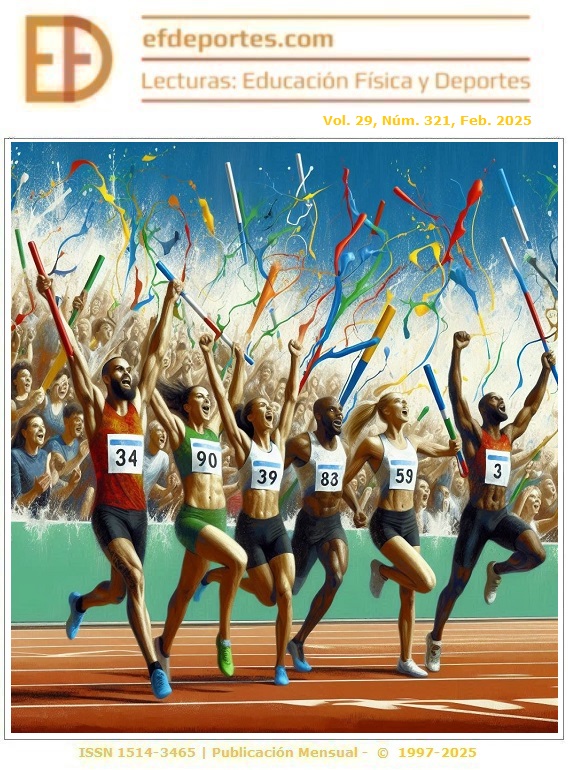Three Dimensions of Sports Betting (Investment, Profit and Effectiveness)
Study in Young University Students in Relation to Sports Marketing
Abstract
The objective of this research is focused on evaluating the dimensions of investment, profit and effectiveness of sports betting in young university students, based on digital marketing. A quantitative, explanatory model is applied based on surveys conducted with 378 university students from the city of Villavicencio in Colombia. The data has been analyzed with a multiple linear regression and correlation model. The results indicate that the influence of digital marketing on sports betting is 48% and the experience in betting is the most favorable explanatory variable in investment, profit and effectiveness, contrary to the analysis prior to these bets. It was concluded that it is one of the markets with the greatest growth and its population group is men between 25 and 34 years old since they are driven by a passion for sports and gambling.
References
Abitbol, P., y Botero, F. (2005). Teoría de elección racional: estructura conceptual y evolución reciente. Colombia Internacional, 62(1), 132-145. https://doi.org/10.7440/colombiaint62.2005.08
Arenas, J.D. (2021). Economía conductual de la protección al consumidor en el e-commerce colombiano. Cuadernos de Economía, 40(82), 1-23. https://doi.org/10.15446/cuad.econ.v40n82.78584
Asojuegos (2020). Sector en Cifras. https://asojuegos.co/wp-content/uploads/2021/03/estadisticas-2020.pdf
Baldinelli, F. (2023). ¿Cómo han ayudado las apuestas deportivas con más dinero al desarrollo de los deportistas? Lecturas: Educación Física y Deportes, 27(296), 234-237. https://efdeportes.com/efdeportes/index.php/EFDeportes/article/view/3827
Barón, F., y Téllez, F. (2004). Regresión Múltiple. In Apuntes de Bioestadística. Universidad de Málaga. https://www.bioestadistica.uma.es/apuntesMaster/regresi%C3%B3n-lineal-m%C3%BAltiple.html
Bermejo Higuera, J.C. (2017). El arte del cuidado como elemento humanizador en la era de la tecnología. Documentación social, 187, 49-70. https://dialnet.unirioja.es/servlet/articulo?codigo=6557103
Bojórquez, J., López, L., Hernández, M., y Jiménez, E. (2013). Utilización del alfa de Cronbach para validar la confiabilidad de un instrumento de medición de satisfacción del estudiante en el uso del software Minitab. In Innovation in Engineering, Technology and Education for Competitiveness and Prosperity: Proceedings of the 11th Latin American and Caribbean Conference for Engineering and Technology. https://www.laccei.org/LACCEI2013-Cancun/RP065.html
Bryan, C.D.B. (2010). 100 years of adventure and discovery. The National Geographic Society.
Campo-Arias, A., y Oviedo, H.C. (2008). Propiedades Psicométricas de una Escala: la Consistencia Interna. Revista de Salud Pública, 10(5), 831-839. http://dx.doi.org/10.1590/S0124-00642008000500015
Cantero, F., y Bartolín, J.M. (2015). ART. Influencia de las nuevas tecnologías en los problemas de juego y en las compras impulsivas en los jóvenes. Revista Española de Drogadependencias, 40(4), 34-47. https://www.researchgate.net/publication/287490200
Castro, E. (2023). ¿Cuáles son las leyes de las apuestas deportivas en México? Sherlock Communications. https://www.sherlockcomms.com/es/leyes-apostas-desportivas/
Fernández, G. (2008). Loterías y Apuestas del Estado (Vol. 1). Ed. Comuniland.
Fernández Ricón, R. (2022). Jóvenes y publicidad de apuestas deportivas online. La experiencia española en torno a la regulación de 2021. Correspondencia & Análisis, 15(5), 105-126. https://doi.org/10.24265/cian.2022.n15.05
Ferris, J. (2008). Estadística para las Ciencias Sociales (2ª edición). Ed. McGraw Hill.
Fuentes Rodríguez, G., y Camargo Flechas, J.J. (2018). Estudio de educación en finanzas personales en los estudiantes Universitarios Caso de estudio: Corporación Universitaria Minuto de Dios Vicerrectoría Regional Orinoquia. Ecorfan, 4(12), 49-59.
Gervilla García, E., Cabrera Perona, V., y Lloret Irles, D. (2022). Adaptación española de la Escala de Impacto de la Publicidad de Apuestas en adolescentes. Atencion Primaria, 54(2). https://doi.org/10.1016/j.aprim.2021.102230
Hernández, R., Baptista, C., y Baptista, P. (2014). Metodología de la Investigación (6ª Ed.). Ed. McGraw Hill.
Hing, N., Russell, A., Nuske, E., y Gainsbury, S. (2015). The stigma of problem gambling: Causes, characteristics and consequences. Victorian Responsible Gambling Foundation. https://responsiblegambling.vic.gov.au/resources/publications/the-stigma-of-problem-gambling-causes-characteristics-and-consequences-351/
Kahneman, D. (2011). Pensar Rápido Pensar Despacio. Ed. Debolsillo.
Martínez, A.M., Hernández M., y Velásquez O. (2022). Evaluación de las decisiones financieras operacionales que generan flujo de caja en las MIPYMES. Revista Métodos Cuantitativos para la Economía y la Empresa, 34, 60-82. https://doi.org/10.46661/revmetodoscuanteconempresa.5524
Martínez, C. (2019). Estadística Básica Aplicada (5ª ed.). ECOE Ediciones.
Moriconi, M., y Almeida, J.P. (2021). Online sports betting market and new technologies: Fertile ground for fraud and crime. Sociología, Problemas e Prácticas, 96, 93-116. https://doi.org/10.7458/SPP20219619794
Navarro, E. (2015). Guía para la interpretación de resultados en el contraste de hipótesis estadísticas (5ª ed.). Ed. Edukative.
Pérez Martínez, A., y Rodríguez-Fernández, A. (2022). Behavioral Economics: its influence on the prediction of sports results. Retos, 12(23), 125-138. https://doi.org/10.17163/ret.n23.2022.08
Rodríguez, M., y Mora, R. (2001). Estadística Informática: casos y ejemplos con el SPSS. Universidad de Alicante.
Rojo, A. (2007). Regresión Lineal Múltiple. Instituto de Economía y Geografía.
Rubio García, L. (2018). Apuestas deportivas online: percepción adolescente y regulación publicitaria. Methaodos. Revista de Ciencias Sociales, 6(1), 139-1489. https://doi.org/10.17502/m.rcs.v6i1.207
Sánchez, C.M. (2024). La historia de las apuestas deportivas. ABC. https://www.abc.es/xlsemanal/a-fondo/historia-apuestas-deporte-griegos-siglo-xxi.html
Sistema Nacional de Educación Superior - SNIES (2021). Información estadística. Ministerio de Educación Nacional. https://snies.mineducacion.gov.co/portal/
Souza, F.C. (2018). ¿Entretenimiento, pasión o inversión? Comportamiento y perfil del público brasileño en las apuestas deportivas online [Trabajo Final de Máster, Estrategia y Creatividad Digital. Universidad Autónoma de Barcelona]. https://ddd.uab.cat/pub/trerecpro/2018/hdl_2072_336552/TFM_-_Clarissa_FigueirA_.pdf
Stanovich, K.E. (1999). ¿Who is rational?: studies of individual differences in reasoning. Lawrence Erlbaum Associates.
Copyright (c) 2025 Lecturas: Educación Física y Deportes

This work is licensed under a Creative Commons Attribution-NonCommercial-NoDerivatives 4.0 International License.









